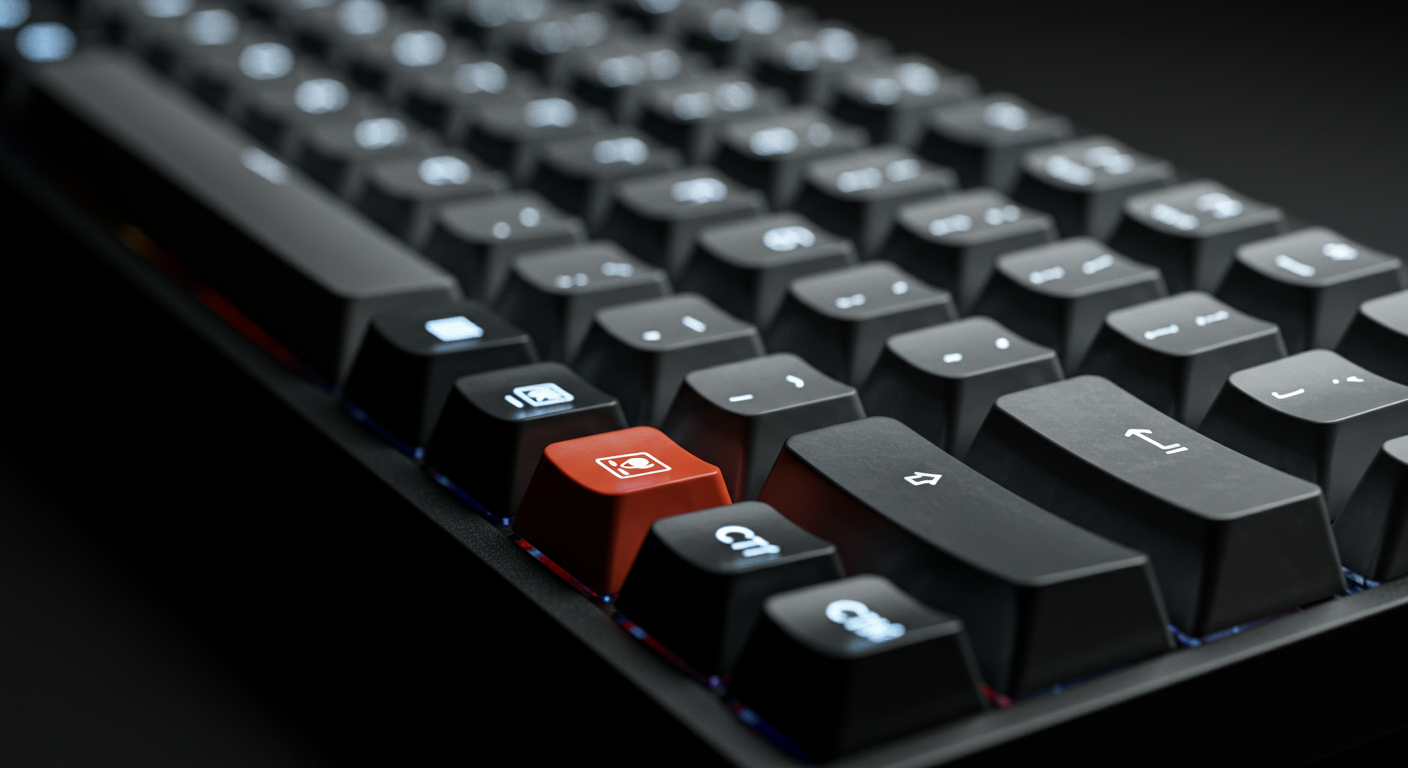Now Reading: The Ultimate Guide to Keyboards: From Mechanical to Membrane and Beyond
- 01
The Ultimate Guide to Keyboards: From Mechanical to Membrane and Beyond
The Ultimate Guide to Keyboards: From Mechanical to Membrane and Beyond

Introduction: The Unsung Hero of Your Computer
The keyboard: a seemingly simple device, yet the primary interface for interacting with our digital world. From crafting emails to coding complex programs, the keyboard is the unsung hero of our daily lives. But beyond the basic QWERTY layout lies a diverse landscape of technologies, designs, and features. This guide will delve into the different types of keyboards, their strengths and weaknesses, and how to choose the perfect one for your specific needs. Whether you’re a gamer, a programmer, a writer, or simply someone who uses a computer regularly, understanding the nuances of keyboards can significantly enhance your productivity and comfort.
So, let’s begin our journey into the fascinating world of keyboards!
Mechanical Keyboards: A Tactile and Durable Option
Mechanical keyboards are renowned for their tactile feedback, responsiveness, and durability. Unlike membrane keyboards, which use a rubber dome to register key presses, mechanical keyboards utilize individual mechanical switches under each keycap. These switches offer a distinct feel and sound, making typing a more engaging and satisfying experience.
Key Features of Mechanical Keyboards:
- Tactile Feedback: Each key press provides a distinct bump or click, confirming that the key has been registered.
- Audible Clicks: Many mechanical switches produce a satisfying clicking sound, although quieter options are available.
- Customization: Keycaps can be easily swapped out to personalize the look and feel of the keyboard.
- Durability: Mechanical keyboards are built to last, with switches rated for millions of keystrokes.
- N-Key Rollover (NKRO): Allows multiple keys to be pressed simultaneously without any missed inputs, crucial for gamers and fast typists.
Popular Mechanical Switch Types:
- Cherry MX: A widely used and respected switch manufacturer, offering a variety of switch types with different characteristics (e.g., Cherry MX Blue for clicky, Cherry MX Brown for tactile, Cherry MX Red for linear).
- Gateron: A popular alternative to Cherry MX, often offering similar performance at a lower price point.
- Kailh: Another reputable switch manufacturer, known for its diverse range of switches and innovative designs.
Mechanical keyboards are a fantastic choice for those who value typing feel, durability, and customization options. However, they tend to be more expensive and can be quite loud, especially with clicky switch types.
Membrane Keyboards: The Affordable and Quiet Alternative
Membrane keyboards are the most common type of keyboard, often found pre-packaged with desktop computers. They are characterized by their affordability, quiet operation, and slim profile. Instead of individual mechanical switches, membrane keyboards use a rubber dome or a membrane layer to register key presses.
Key Features of Membrane Keyboards:
- Affordability: Membrane keyboards are significantly cheaper than mechanical keyboards.
- Quiet Operation: They produce very little noise, making them ideal for shared workspaces or quiet environments.
- Slim Profile: Membrane keyboards tend to be thinner and lighter than mechanical keyboards.
- Spill Resistance: Many membrane keyboards offer some level of spill resistance, making them more durable in case of accidental spills.
Types of Membrane Keyboards:
- Dome-Switch Keyboards: Use a rubber dome under each key that collapses when pressed, creating a connection on the circuit board.
- Flat-Panel Membrane Keyboards: Use a flexible membrane with printed circuitry. These are often found in calculators and other small devices.
While membrane keyboards may lack the tactile feedback and durability of mechanical keyboards, they offer a cost-effective and practical solution for everyday use. They are an excellent choice for budget-conscious users or those who prioritize quiet operation.
No products found.
Beyond the Basics: Ergonomic and Gaming Keyboards
Beyond the traditional mechanical and membrane keyboards, there exists a range of specialized keyboards designed for specific purposes and user needs.
Ergonomic Keyboards:
- Designed to reduce strain and promote a more natural typing posture.
- Often feature split layouts, contoured keycaps, and wrist rests.
- Help to prevent repetitive strain injuries (RSIs) like carpal tunnel syndrome.
Gaming Keyboards:
- Optimized for gaming performance with features like anti-ghosting, NKRO, and programmable macro keys.
- Often feature customizable RGB lighting and durable construction.
- Designed for fast response times and precise control.
Other Specialized Keyboards:
- Wireless Keyboards: Offer freedom of movement and eliminate cable clutter.
- Bluetooth Keyboards: Connect wirelessly to multiple devices, such as computers, tablets, and smartphones.
- Compact Keyboards (Tenkeyless): Omit the number pad to save space on the desk.
Choosing the Right Keyboard: Factors to Consider
Selecting the perfect keyboard depends on your individual needs, preferences, and budget. Here are some key factors to consider:
- Typing Style: Do you prefer a tactile and clicky feel, or a quiet and smooth typing experience?
- Budget: Mechanical keyboards are generally more expensive than membrane keyboards.
- Usage: Will you be using the keyboard for gaming, writing, programming, or general use?
- Ergonomics: Are you concerned about wrist strain and want to prioritize ergonomic features?
- Size and Layout: Do you need a full-size keyboard with a number pad, or a compact tenkeyless model?
- Connectivity: Do you prefer a wired or wireless keyboard?
- Customization: Do you want to be able to customize the keycaps and other aspects of the keyboard?
Final Thoughts:
The keyboard is a crucial tool that deserves careful consideration. By understanding the different types of keyboards and their features, you can choose the perfect one to enhance your productivity, comfort, and overall computing experience. Take the time to research and experiment to find the keyboard that best suits your needs. Happy typing!
No products found.















